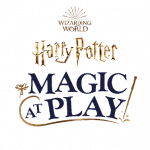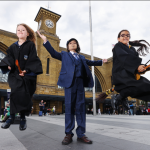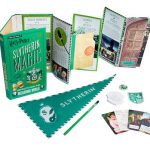Early Review: Harry Potter Page to Screen: The Complete Filmmaking Journey

Oct 24, 2011
Movies
Harry Potter Page to Screen: The Complete Filmmaking Journey, which arrives in bookstores this Tuesday, is one of the most comprehensive Harry Potter film guides imaginable. Its 532 pages, three times as many as Harry Potter Film Wizardry, are filled with countless never-before-seen photos from the production of each of the eight films, along with detailed notes and interviews with the cast and crew about their experiences working on the film. Leaky was able to get an early copy of the book for review, which can be read below. Enjoy!
~~~*~~*~~~
The first impression one gets about Harry Potter Page to Screen: The Complete Filmmaking Journey is how massive the entire tome is in hand. It feels as if it’s an ancient book checked out from the Hogwarts Library, and has about as much information on its pages, too. It took me a moment after first taking off the shrink wrap to just feel and examine the book before I even opened it. It’s a classic dark blue and gold and looks as if it’s a book you’d want to keep out handy on a table and not stocked away on a bookshelf. Opening its cover and going through the pages reveals countless production photos and production art that are set along side interviews with the cast and crew. Small tidbits of information about the sets, their props and dressings, and even drawings and notes from author J. K. Rowling to the production team also litter the pages, giving the book the most comprehensive feelings I’ve ever come across.
The book itself is divided up into three parts: The Making of Harry Potter, The Art of Harry Potter, and, most appropriately, the Epilogue, which contains a special note on the Golden Boards feature. The first section of the book gives way to nearly 200 pages on making all seven films in the series and shows the countless details and choices that helped make the films look as real– and magical– as possible. The production of and major elements for each film are laid out as if you were walking through the story once again and works very well for this book. Intermixed with behind the scenes photos and narrative are production designs and concept art which give a great juxtaposition between what the designers envisioned and what ultimately appeared in the films. This includes building designs and sets, but also original character and creature sketches. This section does and excellent job at showing the long and detailed process how each film evolved from Jo’s story to the filmmakers concepts to, finally, what we see on screen.
In the second section, the art of the Harry Potter films is profiled. Production Designer Stuart Craig and Creature Designer Nick Dudman and their teams take us through each characters, creatures and sets seen throughout the films. I could not think of a being or place that was not featured in this section– it’s that comprehensive. The pages devoted to the evolution of Hogwarts Castle from its first sketches during pre-production of “Sorcerer’s Stone” to the destruction of the castle in “Deathly Hallows,” are jaw-dropping and filled with more details than have been given before about the iconic building. It is difficult to pick out favorites because there is just so much that’s included in this book. The same can be said of many of the characters in the film, particularly, the Trio and Lord Voldemort.
However, there is one part of the films noticeably absent from the book is the Epilogue scene at the end of “Harry Potter and the Deathly Hallows: Part 2.” Images from this final part of the film, along with the usual behind the scenes detail and information is not included in the book. Whether this is due to the secret nature of the filming of that scene or the fact that it’s final cut was the product of re-shoots following the initial wrap of the film we do not know. However, it is slightly disappointing, given the amount of information this book features for every other major moment in the film, that we don’t get to see the kind of details there must have been to create the Harry Potter cast nineteen years on.
Those concerned about this book being more of a scrapbook-styled look at the Harry Potter films, such as last year’s Harry Potter Film Wizardry, need not worry; Harry Potter Page to Screen is its own unique volume and hardly overlaps with Film Wizardry. Flipping through the pages of this book and
reading of the process by which the Harry Potter films came to be is a
tremendously rewarding experience. It is rewarding not only for the
thousands of images of cast and crew on set and behind the scenes
details included in the book, but also for the shedding light on how and why the filmmakers
made the films the way they did. No other book, at least in my memory, has comes close to showing just how much went into the production of these films and how each detail was malicious planned and perfected by the filmmakers. Harry Potter Page to Screen is a enlightening and engaging read for any Harry Potter fan wishing to know more about the series, as well as any film student curious on what it takes to bring a seven part fantasy series to life on the big screen.
Harry Potter Page to Screen: The Complete Filmmaking Journey retails for $75 in the US, and is available for sale Tuesday, October 25, 2011.





